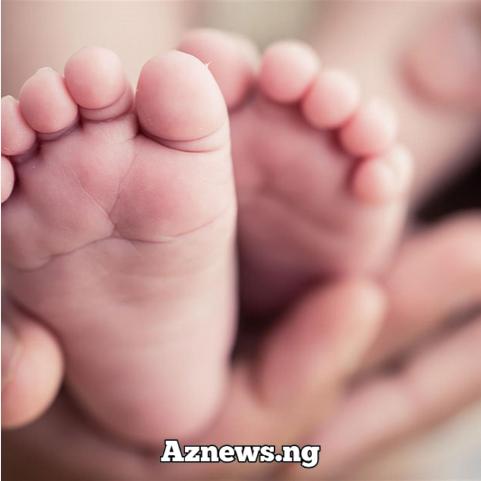
Baby has a bot foot. What is it? This malformation of the foot is quite common in toddlers. Care at an early stage, it is well cared for and allows children to walk smoothly. We take stock with Dr. Caroline Dana, a paediatric orthopaedic surgeon in Paris......Read The Full Article>>.....Read The Full Article>>
The bot foot is a bone malformation of the foot, accompanied by retraction of the tendons and muscles. “Every year, almost one child in 700 births is affected. This is the most common malformation in the population,” explains Dr Caroline Dana, a paediatric orthopaedic surgeon in Paris.
What is a bot or horse varus?
While there are many types of bot foot, the more common shape remains equine varus. “Varius” meaning that the sole of the foot is facing inwards, and “equine”, that the foot points down. In half of the cases, both feet of the infant are affected. It is then said that the malformation is bilateral (and therefore unilateral if it affects only one foot).
What are the causes of the bot foot?
“There are some bots that are family shapes through certain mutations so there are “bot families” but this remains a small proportion of cases,” explains Dr Caroline Dana. “Most cases are without any particular explanation, they are said to be idiopathic.” These are very rare cases, but sometimes the bot foot is linked to more serious genetic syndromes. “In these rare cases, polymalformative syndromes are detected, which may lead to further exploration during pregnancy, the amniocentesis type. It is even possible to propose medical termination of pregnancy to the parents.” Fortunately, these are very rare.
The detection of a bot in utero foot always stresses a lot of parents, who fear that this malformation is a sign of appeal to other pathologies, but in most cases there is nothing else to report in the unborn child.
Diagnosis of the bot foot, sometimes before birth
“In the vast majority of cases, the bot foot is diagnosed as from the second trimester echography. The opportunity to explain to future parents the rest of the events,” explains the orthopaedist. In general, it was the obstetrician who conducted the ultrasound orienting the future parents towards an orthopaedic, responsible for informing them of the administration of this anomaly. The bot foot is very well today, provided that treatment starts from birth.
Does the bot foot heal?
Immediately born, immediately treated… the treatment of the bot foot begins on the second or third day of life. Early care allows the toddler to stand and frolic at the same age as his crèche friends (between 12 and 18 months).
Two methods are now used in France: orthopaedic treatment and functional treatment.
Orthopaedic treatment of the bot foot
It consists in immobilizing the baby’s foot with a plaster, which must be renewed… Every week. With each change, the doctor “gets” a little more on the bones, muscles and tendons. The final aim is to return the foot to the closest possible position to normal. There is also talk of the Ponseti method, the name of the surgeon who developed it. At the sixth week, the small patient sometimes passes over the operating table. The surgeon cuts the Achille tendon (tenotomie) to correct the equin. Then it left for the succession of plasters and splints, for about 6 weeks.
Functional treatment, splints to go
The principle remains similar to orthopaedic treatment, with the only difference that instead of plasters, these are splints that the physiotherapist changes; to which is added rehabilitation. The “english method,” as Americans call it, does not provide for surgery in the sixth week.
Surgery as a last resort?
Unfortunately, not all children are equal in the face of successful treatment. About 5% of initial therapies will fail, resulting in surgery. The intervention, generally carried out around the age of one year, consists in cutting “a little of everything” (muscles, skins, tendons, etc.) in order to put the foot back in a position close to normal. It is followed by six weeks of plaster. “If the sequels and post-operative follow-up can be a little heavy for children, it remains children who acquire the walk as well as others, they have a little stiffer than the average, but it does not prevent them from leading a normal life,” says Dr Dana.
In all cases, the child will have to be regularly monitored until the end of his or her growth. If it is at high risk of recidivism, it should continue to wear splints during the day and/or night. According to Dr Caroline Dana, “these children can exercise normally; but they will remain monitored, as there is a risk of recurrence of the deformation until the age of 5 or 6 years. Afterwards they can do any sport and any activity like their little comrades.”
Does the child wear special shoes?
During the day, children who have been treated for a bot foot will wear normal shoes. But at night, up to 4-5 years old, they wear a thermoformed orthosis to hold the foot and avoid any recurrence.
At what age can a child born with a bot foot walk?
Once the care has been provided on time, the child will not be hindered in learning to walk. If the functional or orthopaedic care has worked, the child walks around 12-18 months, like the others.
Exposure to screens before 3 years of age will have an impact on the health of the child. It hinders the cognitive and motor development of the child, or even even the same.
